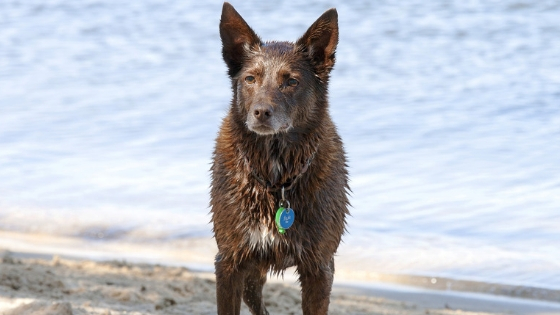

Thật đáng sợ khi phải đối mặt với bất kỳ vấn đề sức khỏe nào, nhưng cơn động kinh ở những con chó cao cấp lại là một vấn đề đáng sợ khác, ít nhất là đối với tôi.
Không có gì khiến tôi hoảng sợ hơn việc nghe Red lên cơn co giật.
Đúng là tôi nói “nghe” vì lần đầu tiên chuyện đó xảy ra tôi chỉ nghe thấy thôi, và chỉ bấy nhiêu thôi cũng đủ khiến tim tôi ngừng đập.
Trước khi nói về trải nghiệm của mình, chúng ta hãy xem cơn động kinh ở những con chó lớn tuổi là gì.
Tiết lộ: Một số liên kết trong bài viết này là liên kết liên kết (Amazon Associate hoặc các chương trình khác mà chúng tôi tham gia). Với tư cách là một chi nhánh, tôi kiếm được một khoản hoa hồng nhỏ từ các giao dịch mua hàng đủ điều kiện. Để biết thêm chi tiết, vui lòng xem trang tiết lộ của chúng tôi .
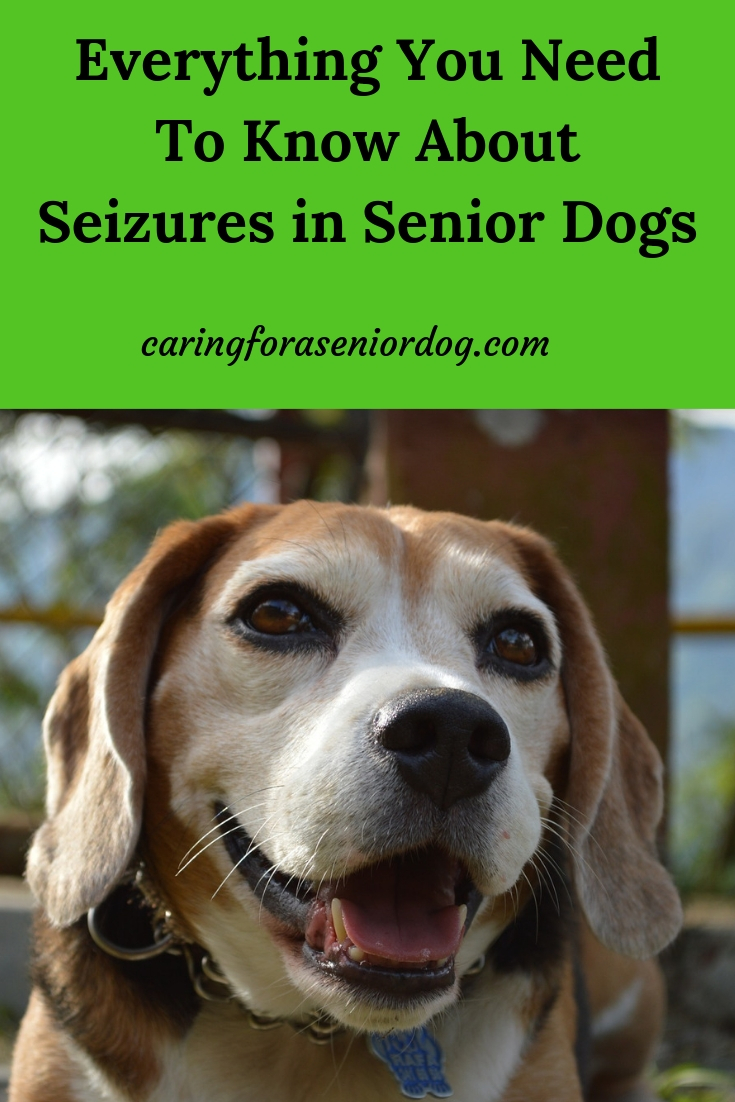
Động kinh là gì?
Theo giải thích của Tiến sĩ Karen Becker , cơn động kinh là “hoạt động điện bất thường không lường trước được xảy ra trong n.ã.o thú cưng của bạn”.
Sự khác biệt giữa động kinh và động kinh là gì?
Động kinh đề cập đến các cơn động kinh lặp đi lặp lại hoặc các cơn động kinh mãn tính.
Con chó của tôi có thể bị một lần và không bao giờ bị nữa không?
Tôi e rằng điều đó rất hiếm.
Theo trang web Fitzpatrick GIỚI THIỆU (một bệnh viện chuyên khoa nổi tiếng ở Anh), “Hầu hết các động vật mắc bệnh động kinh đều có thể có chất lượng cuộc sống tuyệt vời. Tuy nhiên, bệnh động kinh là một bệnh mãn tính và đôi khi tiến triển cần được kiểm soát.
Hiếm khi, con vật có thể bị một cơn động kinh duy nhất và không bị động kinh nữa. Một con vật có nhiều cơn động kinh được cho là sẽ có những cơn động kinh thường xuyên hơn hoặc nghiêm trọng hơn trong tương lai.
Có bằng chứng cho thấy rằng điều trị sớm trong quá trình điều trị bệnh động kinh có thể mang lại kết quả lâu dài tốt hơn.”
Kinh nghiệm của tôi về cơn động kinh ở chó lớn tuổi

Tôi có thể không nhớ ngày Red lên cơn đầu tiên, nhưng tôi biết rất rõ những chi tiết đáng sợ còn lại.
Tôi đang xem TV trong phòng khách vào khoảng 11 giờ đêm và Red đang nằm trên giường của cô ấy ở phía bên kia chiếc ghế dài, khuất tầm nhìn của tôi. Đột nhiên tôi nghe thấy một tiếng nổ lớn và tiếng khóc kinh hoàng nên tôi nhảy dựng lên và thấy Red đang nằm trên giường run rẩy.
Bản năng trỗi dậy và tôi bế cô ấy lên để an ủi. Cô ấy dường như đã tỉnh táo một phần, tè khắp người tôi và tấm thảm, vài giây sau cô ấy ổn định và quay lại ngủ như không có chuyện gì xảy ra.
Tất nhiên là tôi chạy đi đánh thức chồng rồi gọi điện cho bệnh viện cấp cứu.
Họ trấn an tôi và đảm bảo với tôi rằng không có lý do gì để đẩy cô ấy vào, trừ khi cô ấy lên cơn động kinh khác. Họ bảo tôi hãy gọi bác sĩ thú y vào buổi sáng, điều mà dù thế nào tôi cũng sẽ làm.
Tôi hỏi họ phải làm gì nếu chuyện đó xảy ra lần nữa, và hóa ra tôi đã làm sai mọi thứ nhưng với mục đích rất lớn.
Tôi được yêu cầu không đón cô ấy khi cô ấy đang lên cơn co giật và phải tắt đèn.
Không cần phải nói, đêm đó tôi đã quan sát cô ấy như một con diều hâu.
Ngày nào tôi cũng suy sụp trong nhiều tuần sau cơn động kinh đầu tiên đó. Tôi liên tục tự hỏi liệu hôm nay có phải là ngày điều đó xảy ra lần nữa hay không và tôi sẽ nghe thấy tiếng hét đông m.á.u đó.
Theo thời gian, cuối cùng tôi cũng không còn mong đợi cô ấy lên cơn động kinh nữa, nhưng tôi vẫn lo lắng.
May mắn thay, cô chỉ có một vài chiếc, và tất cả chúng đều theo cùng một khuôn mẫu. Mỗi lần đều vào đêm khuya khi cô đang ngủ, bắt đầu bằng tiếng khóc đau lòng, tè trên giường, rồi tiếp tục ngủ.
Cho đến tối thứ Bảy ngày 17 tháng 12 năm 2016, tôi mới chỉ nhìn thấy cô ấy lên cơn động kinh ở giai đoạn giữa, chưa bao giờ thấy nó thực sự xảy ra trước đó.
Thứ Bảy tuần đó, chúng tôi lái xe từ Anh đến Tây Ban Nha và gần nửa đêm chúng tôi dừng lại nghỉ qua đêm tại một khách sạn.
Những con chó ở cùng chúng tôi trên giường (tôi sẽ không để chúng ngủ trên sàn phòng khách sạn!!), và Red đang nằm cạnh tôi.
Đột nhiên tôi nhận thấy cô ấy bắt đầu co giật và tôi ngay lập tức nói với chồng mình “Red sắp lên cơn co giật”. Đầu cô ngửa ra sau, bốn chân duỗi thẳng trước mặt và cơ thể cô bắt đầu run rẩy.
Như thường lệ, nó chỉ kéo dài vài giây và cô ấy tiếp tục ngủ như không có chuyện gì xảy ra. Ơn trời là tôi đã thấy trước được và đắp chăn cho cô ấy.
Chúng tôi không bao giờ biết tại sao cô ấy lại mắc phải chúng và vì chúng rất hiếm và chỉ kéo dài vài giây nên bác sĩ thú y cảm thấy không cần dùng thuốc hay hành động gì thêm và tôi đã đồng ý.
Tôi đã bày tỏ sự lo lắng của mình rằng một ngày nào đó Red có thể lên cơn co giật lớn hơn, vì vậy anh ấy đã đưa cho tôi một ống tiêm Diazepam trực tràng nếu cô ấy phải chịu một cơn động kinh nghiêm trọng hơn.
Tôi chắc chắn cảm thấy tốt hơn rất nhiều khi biết rằng tôi có thể làm gì đó để giúp cô ấy nhanh chóng.

Nguyên nhân gây động kinh ở chó lớn tuổi?
Có lẽ tôi nên nói là chó ở mọi lứa tuổi, nhưng một số loài phổ biến hơn ở chó già.
Những nguyên nhân có thể khiến chó bị co giật bao gồm:
- Ký sinh trùng
- Lượng đường trong m.á.u thấp
- Tổn thương
- Bệnh gan
- Tuần hoàn kém
- Thiếu canxi
- Di truyền học
- U não
- bệnh dại
- Đột quỵ nhiệt
- Phơi nhiễm độc tố
- Các vấn đề về m.á.u hoặc nội tạng
- Tuyến giáp hoạt động kém (suy giáp)
- Một số giống có thể dễ mắc phải chúng
Ở những con chó cao cấp , chúng thường liên quan đến:
- U não
- Bệnh gan
- Bệnh thận
- Quá liều insulin ở chó mắc bệnh tiểu đường
- Bệnh Cushing (không phải bản thân căn bệnh mà là một số vấn đề liên quan đến nó)
Không có gì lạ khi những con chó lớn tuổi phát triển các cơn động kinh vô căn, có nghĩa là không có lý do rõ ràng cho chúng.
Tôi đã xem video này của Tiến sĩ Karen Becker và tôi thực sự khuyên bạn nên xem, rất nhiều thông tin tuyệt vời.
Dấu hiệu chó của bạn có thể bị động kinh
Nếu con chó của bạn có hành động kỳ lạ hoặc không bình thường, hãy tìm những dấu hiệu này.
Chúng có thể chỉ ra rằng con chó của bạn đang bị co giật, đặc biệt nếu có nhiều cơn xảy ra gần nhau.
- Co giật không kiểm soát
- Lảo đảo hoặc dao động tới lui tại một chỗ
- Loss of bladder and/or bowel control
- Trembling
- Falling over
- Leaping in the air
- Pacing
- Drooling
- Disorientation
- Vomiting
- Paralysis
- Temporary loss of sight
- Inability to understand commands
Seizures won’t look the same in every dog and can even be slightly different from episode to episode with the same dog.
Seizures can also differ in severity. It could be nothing more than a slight twitch that lasts a second, to full on uncontrollable shaking that lasts minutes.
What to Do and What NOT to Do When Your Dog Has a Seizure
Don’t panic! Easy to say, hard to do.
When Red had her first seizure, I was completely clueless, and boy did I panic.
When I called the emergency hospital they told me not to pick her up in the middle (too late, I already had!), and turn off the lights, which I can’t imagine would help because Red was blind.
In an article written for the American Kennel Club website called Seizures in Dogs, Dr. Jeff Grognet recommends the following if your dog is having a seizure:
- Keep yourself safe. Seizing dogs can bite without warning.
- Do not pull the tongue. Dogs don’t swallow their tongues.
- Using a hind leg, pull the dog away from furniture and stairs.
- Cover your dog with a blanket to reduce the light and turn down sources of sound.
- If the seizure continues, put an ice pack on the spine at the back of the ribs.
- For transport to the hospital, use a blanket like a hammock to keep the dog, and yourself, safe.
The 3 Stages of a Canine Seizure
Pre-Ictal: The Seizure is Coming
The pre-ictal phase, sometimes called the aura, is a period before the seizure happens when your dog starts to act a little strange.
There are many possible signs that indicate a seizure will be coming and can include:
- Restlessness
- Whining
- Fear
- Aggression
- Clinginess
- Barking
- Crying
- Howling
- Losing their balance
- Pacing
- Drooling
In Red’s case each one started with a heart stopping (for me) horrible high pitched cry. My vet said it was because she knew something was happening, but didn’t know what.
This stage can last anywhere from a few seconds to a few hours.
Ictal: Your Dog is Having the Seizure
The Ictal stage is when your dog will experience a seizure.
As stated above, he symptoms can vary depending on the severity and by dog.
The behaviors exhibited during a seizure can be anything from growling and twitching to violent spasms and convulsions.
Urination, defecation, and drooling often occur during this state.
A “normal” seizure last about 5 minutes but they can last longer. If your dog’s seizure lasts longer than that, it’s called a “prolonged seizure” (duh, right?).
Post-Ictal: Your Dog is Coming Out of the Seizure
This is the recovery stage, when your dog will feel the seizure’s effects.
He may be:
- Disoriented
- Weak
- Sleepy
- Temporary blindness
The amount of time he will be feeling the effects of the seizure, and recovering from it, will depend on how severe the seizure was.
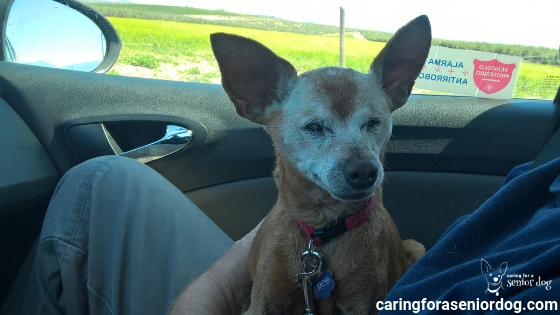
Are Seizures Painful or Dangerous for a Dog?
When your senior dog has a seizure, it’s “painful” for you to witness.
However, they are not painful for your dog.
Having said that, here is what the VCA Hospitals have to say in an article on their website called Seizures in Dogs:
“Despite the dramatic and violent appearance of a seizure, seizures are not painful, although the dog may feel confusion and perhaps panic.
Contrary to popular belief, dogs do not swallow their tongues during a seizure. If you put your fingers or an object into its mouth, you will not help your pet and you run a high risk of being bitten very badly or of injuring your dog.
The important thing is to keep the dog from falling or hurting itself by knocking objects onto itself. As long as it is on the floor or ground, there is little chance of harm occurring.
A single seizure is rarely dangerous to a dog. However, if the dog has multiple seizures within a short period of time (cluster seizures), or if a seizure continues for longer than a few minutes, the body temperature begins to rise.
If hyperthermia (elevated body temperature) develops secondary to a seizure, another set of problems need to be addressed.”
Effects of a Seizure On Your Dog
Here is what Dennis O’Brien, DVM, PhD, Diplomate, ACVIM, Specialty of Neurology, University of Missouri, College of Veterinary Medicine has to say about the effects of seizures:
“Most seizures are brief, and with proper treatment, the pet can lead a normal life.
None-the-less, seizures are serious business and even short seizures can cause brain damage. That damage tends to be cumulative over time.
If the seizures are short, the main effect is an increased chance of another seizure in the future. Thus, there is a tendency for epilepsy to get worse over time, especially if left untreated.”
If a seizure goes on for more than 30 minutes, the pet is liable to suffer serious permanent brain damage. This can be manifest as a change in personality, or loss of memory for things such house breaking.
Occasionally the pet may be left in a coma from the seizures.
The seizure also creates a tremendous stress on the heart and other organs. The body temperature may get very high from all the muscle activity and the animal may not breath adequately.
Sometimes the stress is too much and the pet may have a heart attack and die. Fortunately this is rare.
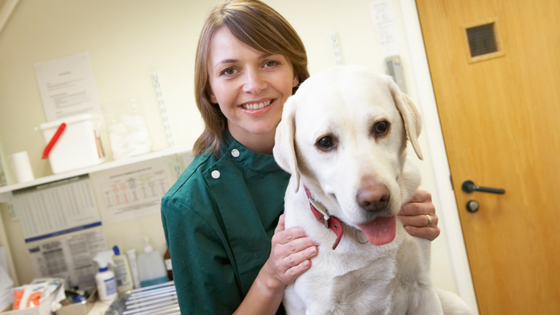
What to Expect at Your Vet Appointment
Naturally, you’ll be seeing your vet as soon as possible after your dog’s first seizure.
I was on the phone the next morning the second they opened and was in my vet’s office not long after.
I am a big believer in making notes ahead of an appointment, no matter the reason for it.
We’re stressed and afraid because of what our vet may tell us about our sick dog, combine that with knowing he or she has only a limited amount of time to spend with us, and we find ourselves forgetting crucial facts or questions.
As soon after the seizure as you can (assuming it wasn’t severe enough to rush your dog to the vet), write down as much information as you can.
- Time
- Date (so you and your vet can track frequency)
- what you witnessed
- What you heard if you didn’t see anything
- What was your dog doing right before it happened?
- How long it lasted
- How did he act after it was over
- How long did it take him to get back to his usual self
- Have you noticed any unusual behaviour in the hours or days leading up to this seizure?
- Have there been any changes in your dog’s environment lately? His schedule? Diet?
- Any new supplements or medications your vet may not know about?
Once you’ve discussed what happened, your vet will examine your dog. That may include taking his temperature, as well as blood and urine for testing, especially if it’s been awhile.
Some tests can produce results in just a few moments, so it’s a good idea to wait.
How to Diagnose Seizures in Older Dogs
Seizures in senior dogs are often the result of an underlying medical condition so your vet will decide what kind of tests, if any, he feels are required.
Your veterinarian may start investigating immediately or may adopt a “wait and see approach”. Remember to speak up if he chooses the latter and you are not comfortable with that.
Things your veterinarian can do include taking blood and urine samples or ordering a CT scan or MRI.
In Red’s case it was “wait and see” and no testing was ever done.
Treating Seizures in Elderly Dogs
Whether or not you are prescribed medication to manage your dog’s seizures is up to your vet – a decision based on frequency and severity of the episodes.
Red did not take any medications, yet a friend’s senior dog was given something to take daily.
According to Dr. Ernest Ward in his article “Seizures in Dogs” I referenced earlier, dogs are given anticonvulsants if:
- A dog has more than one seizure a month
- Has clusters of seizures where one seizure is immediately followed by another
- Has grand mal seizures that are severe or prolonged in duration

Treatments for Seizures in Dogs
These are some medications your veterinarian might prescribe to help control your dog’s seizures.
Phenobarbital (PB) – Long term use can damage the liver, so blood tests will be needed to check function. This article “Phenobarbital” will tell you all about this medication.
Potassium bromide (KBr) – To learn more visit this article Potassium Bromide: Is It Safe for Dogs? published on the FDA website.
Diazepam – According to Benefits and Uses of Diazepam on the Diamondback drugs website “As an anticonvulsant, diazepam may be used in veterinary medicine for the treatment of seizures, whether due to toxic shock or status epilepticus. However, since dogs develop a tolerance rather quickly, diazepam is not typically selected for the continued management of seizures.”
Gabapentin – A drug I know is used by so many senior dog parents to help manage pain, it can also be helpful in this case when used in combination with other treatments. Here is a resource for learning more about Gabapentin and the abstract of a study called Improving seizure control in dogs with refractory epilepsy using gabapentin as an adjunctive agent.
Felbamate (available under the tradename Felbatol®)– An anticonvulsant which isn’t typically given as the first option, only after other drugs have been tried and not been effective. For more information – Using Felbamate to Treat Epilepsy in Cats and Dogs.
Keppra – A prescription medication used alone or in conjunction with other anti seizure drugs, it is considered relatively safe and doesn’t seem to affect the liver or kidneys. Learn more about it in this post Side Effects of Keppra for Dogs.
CBD Oil – A study from Colorado State University showed that, “89% of dogs who received CBD in the clinical trial had a reduction in the frequency of seizures.” In addition, many people report their dog’s dementia symptoms lessen and a study showed it’s effective in decreasing pain from Osteoarthritis-in dogs.
One of my FB friends posted a video of her dog having a seizure, and after putting a couple of drops on his gums it stopped.
I know going near a dog’s mouth while he’s having a seizure is dangerous, but she managed just fine. It obviously wasn’t her first time.
With the sheer volume of companies producing CBD oil how do you know which one to buy? They are definitely not all created equal.
You can do your own research or take my word for it – the one that has helped my dog most over the years is HempMy Pet CBD Oil for Dogs.
Belladonna 200C – You may have heard of Belladonna the toxic plant? Did you know it could also help manage seizures in dogs? This abstract called Clinical Management of Idiopathic Epilepsy in Dogs With Homeopathic Belladonna 200C is very interesting and encouraging. It’s about a one minute read and time well spent.
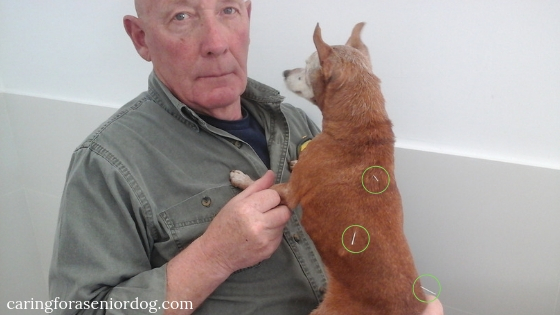
Acupuncture – I took Red for twice weekly acupuncture sessions over the course of 3 months. It wasn’t for seizures but rather as part of an overall wellness plan created by her holistic vet. During the treatments she seemed like the same dog I’d always known, but when we stopped them I noticed an obvious a loss in vitality.
There is some good evidence that acupuncture can help dogs with seizures, and you’ll find more about it in these articles:
The Problem With Seizure Medications and a New Therapy to Consider
Acupuncture therapy for the treatment of intractable, idiopathic epilepsy in five dogs
Important Things to Consider
If you do decide to add natural treatments no matter what condition you’re dealing with, and you will be dealing with more than one vet, communication is key.
Everybody involved in your dog’s care must be aware of what’s going on because failure to keep everyone in the loop can harm your dog.
Don’t suddenly stop giving an anticonvulsant to your dog, you need to speak with your vet if you’re having issues and he will advise on what to do.
What You Can Do for Your Dog
Give him as much love as you’ve always given him.
Don’t drive him crazy by smothering him because you’re so worried.
Do be aware of any changes that are happening, and with experience (hopefully not too much) you’ll recognize the signs earlier and earlier.
If he is about to have a seizure turn the lights off, turn the tv and radio off and remove any sharp objects or anything in the area he could possibly hurt himself on.
Keep a seizure diary for you and your vet and include the following information:
- Date
- How long it lasted
- Severity
- Anything obvious that may have brought it on
- His behavior post-ictal (after the seizure was over)
Seizures in senior dogs – conclusion
I know how scary it is, particularly when you know nothing about seizures (like me) and are feeling so helpless you don’t know what to do (like me again).
I know this article is long and intense so take your time, read through it and save it as a reference.
If I could give you one bit of advice based on my experience (other than reading this article of course!), it would be to not spend your time waiting for the next seizure to happen.
Live your life, enjoy every moment with your fur baby and the next time, which hopefully won’t be for a very long time, you will be better prepared.
Additional Resources
My fellow pet blogger, Dorothy Wills-Raftery is a wonderful source of information.
Her website is called fivesibes.com, and I have linked to all her posts regarding canine epilepsy, therapies and treatments.
If you’d like to learn more about how to help your dog in a more natural way, here is a list of Traditional Chinese Veterinary Medicine practitioners.
To find a holistic veterinarian visit the American Holistic Veterinary Medical Association.
Has your vet been able to determine the cause of your dog’s seizures? Is he or she on medication? Sharing helps others so feel free to share in the comments below.
